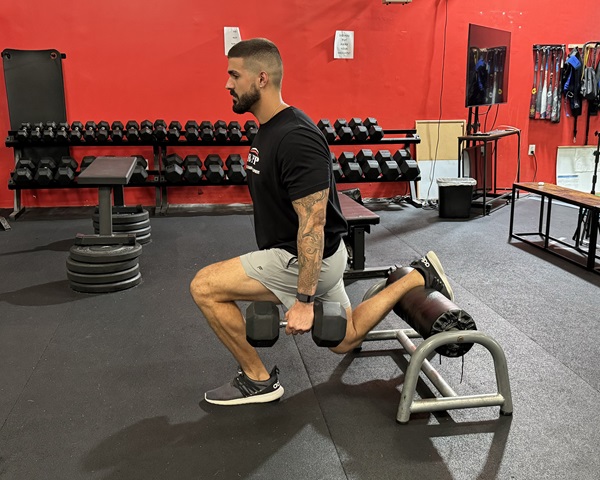
Welcome to Part 3 of “Training Better Force Production”.
After developing Ground Force (Part 1) as well as Elasticity / Acceleration (Part 2), we need a more restorative stimulus that works to restore tendon and tissue quality at the muscular and connective tissue level. In this third and final article of the 3-part series, we’re going to talk about doing just that.
Part 3 – Tissue Prep / Recovery
During a tissue prep phase, we’re still developing strength, but mostly in the tendons and in a more “therapeutic” way to expedite recovery. Developing these qualities involves a method known as “yielding isometrics.”
Yielding Isometrics are a type of training that involves holding a static position generally at the bottom or “sticking point “of the movement for anywhere from :45 sec – 1 min. This is while using additional load (either bodyweight / gravity or weights).
Why?
The power of yielding isometrics is their ability to effectively negate stress and contribute to stress relaxation. These 2 adaptations allow to effectively work to heal damaged collagen found in painful tendons. For this reason, Tissue prep days include high amounts of yielding isometrics.
Some sample exercises –
-
- Rear-Foot Elevated Split Squat (RFESS) Isos
- Push-up Isos
RFESS Iso Holds
When?
Note: Training recovery and tissue prep can be particularly useful in the beginning of the off-season as well as mid-week of a force phase as a type of de-load day.
Allow these days to be the “therapy” for your athlete’s body so they leave the weight room feeling better than when they entered.
Part 4 – Global Movement Patterns
I started using these after Dr. Ismael Gallo – the founder of @baseballflows was a guest on my “Behind the Seams Podcast”. If you’re not familiar with Dr. Gallo or his baseball flows, I would encourage you to look him up.
Global movement patterns combine developmental kinesiology (DK) and dynamic neuromuscular stabilization (DNS). These are early developmental movement patterns we have been using since birth and emphasize more “freedom of movement”. These movements include positions such as supine, prone, crawling, sitting, tripod, walking, squatting, and bear crawls.
Why?
Global movement patterns emphasize training the brain and muscles to work together effectively. Through specific exercises, they improve communication between the brain and muscles, leading to better performance as well as efficient and precise movements that become automatic.
Flow – Dead Bug-Bear Crawl to S-mount Jump
Also, because the other three training days within this system are more rigid, programming Global movement patterns allows for more “free and exploratory” movement. I generally program this day as a movement day. They can also be used as a warm-up to be completed before another one of the training days and are great to be used daily during the in-season.
Some other sample exercises –
-
- Bear Crawls
- Waiters Walks
- Turkish Get Up
Bear Crawl
Summary
When is the best time to train Force?
In the early off-season, when we have a good 5+ months before competition, restoring sound movement patterns and training joints through full ranges of motion is a must. We do this through programming tissue prep in the first month or so of training.
But later in the off-season there is still very much a need for traditional movements in the weight room, whether they are split squats, deadlifts, RFESS, or lateral lunges, training for sport all boils down to generating high force and the ability to generate it when needed, in the time constraint used in the sport or close to it.
In my opinion, after approx. 8 weeks of utilizing overcoming isometrics and depth drops, more explosive movements can be used for the duration of the off-season blended with yielding isometrics to facilitate recovery. But, for those athletes with a younger training age, it may still be a bit premature to implement the methods discussed in parts 1 and 2. However tissue prep and global movement patterns are not only ok, I feel it’s essential to include with younger athletes in order prepare bigger and heavier movements to come.
See ya’ in the gym…
By Nunzio Signore
References:
-
- Dan Cleather. “Force: “The Biomechanics of Training”
- James G. Hay. “Citius, altius, longius (faster, higher, longer): The biomechanics of jumping for distance.” Journal of Biomechanics. 1993;26(1):7–21, ISSN 0021-9290, https://doi.org/10.1016/0021-9290(93)90076-Q.
- Hunter Eisenhour. “Redefining Strength: High Force Does Not Equal High Load” Simplifaster.
You live too far to train with us in-house at RPP? You can now train with us on a REMOTE basis.


